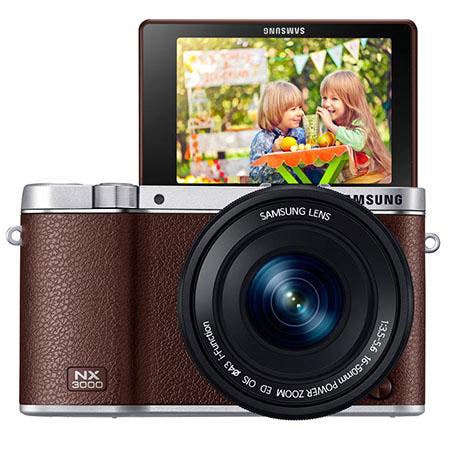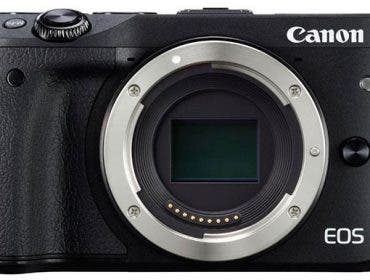If you’re a reasonably serious photographer, sooner or later you will find yourself dissatisfied with the limitations of your digital camera’s built-in flash. But how do you add an accessory or off-camera flash to a camera that doesn’t have a PC terminal and maybe not even a hot shoe? Fortunately, there are three easy ways to do it. All require some experimentation, but the instant results on your LCD screen make it easy.
What you’ll need is a slave flash–an auxiliary flash unit with a built-in or attached “slave” trigger. A slave triggers an off camera flash almost immediately when the on-camera flash goes off. This increases the light output.
Here’s the catch
Before you go out and buy a slave flash system for your digital camera, bear in mind that many digital cameras fire one or more low-powered pre-flashes to establish white balance, and/or reduce the chance of red-eye, about one-tenth of a second or so before making the actual exposure. Result: An ordinary photo-electrically- triggered slave flash will not work with this type of camera (or mode) because the camera’s pre-flash will set off the slave flash before the shutter opens, rendering any flash power useless.
Basically you have three choices. You can buy a slave trigger for your present flash, one of the many specialized digital slave-equipped flashes now on the market, or a digital flash adapter. If your digital camera does not fire pre-flashes and you already own a shoe-mount flash unit, adding an ordinary slave trigger to your present flash unit is a cost-effective option, but you will have to buy an “L” bracket for your auxiliary-flash-plus-slave if your camera lacks a hot shoe.
Good digital slave flashes that mount on digital cameras directly or via included brackets are offered by SR Inc, Sigma, Sunpak, Phoenix, Vivitar, Metz, and most major camera makers. Many have settings that allow the slave flash to disregard a set number of pre-flashes from your digital camera’s built-in flash, and wait for the main flash before firing.
Here’s the other catch
Be aware that some off-brand so-called “digital flash” units or separate “digital slave triggers” are nothing of the kind! They are merely labeled “digital” as a marketing ploy and will fire on the pre-flash. These are useless for most digital camera use. Be sure to ask your dealer to confirm that what you are buying has the requisite delay or delay settings, and is suitable for digital work with your particular camera.
The third option for using an existing flash unit with your digital camera is buying a digital slave adapter, essentially a mounting bracket with a built-in slave trigger designed to work with a variety of digital cameras. I’ll get to specifics on these in a moment.
With the exception of a few system-dedicated units offered by camera makers and others, most point-and-shoot digital cameras have no way of “knowing” that you are using an additional flash. This means that your camera will act as though you are trying to take a photo beyond its flash range and it may open the lens aperture fully.
Result: It is easy to overexpose your shots unless your camera has manual exposure settings. Indeed, some experimentation may be necessary before you get perfect exposures. But that’s one of the great advantages of digital photography—you can see the results right away and correct problems on the spot!
The advantage of (photographic) slavery
What can you do with a digital slave flash? The main selling point touted by flash vendors is additional light, and that is important. The light output of an accessory flash allows you to take flash photos at much greater distances than the typical 10 to 18 foot maximum of built-in flash units.
The examples shown here illustrate the point. The photo below left was taken across a parking lot using only a Canon PowerShot 565’s built-in flash. The photo on the right was taken with the full power of a Vivitar 5600 shoe-mount flash equipped with a Wein slave. The benefit of the additional light is, well, like the difference between night and day, even though I was shooting at about 100 feet from the building!
But there are a myriad of other things you can do with the light provided by a digital slave flash. Here are two shots of a lovely brass antique microscope from my miscellaneous scientific equipment collection. I took the first photo using only the built-in flash on an inexpensive fixed-focus point-and-shoot digital camera.
To achieve better lighting, I then tried a small monolight-type studio flash set for 60 watt-seconds and fitted with a 29-inch square diffuser panel. I added four sheets of white paper over the flash tube to reduce the light intensity even more, attached a Wein slave to the monolight, and fired it with the point-and-shoot’s tiny built-in flash. You can see the improvement you get with the monolight setup—particularly in the reflective brass finish.
When using a slave, you may not want the light from your camera’s flash to affect the exposure at all. The solution? Easy! Just block off the camera’s flash with a piece of unexposed slide film! If you don’t have one lying around in a box of processed slides, your local photo lab may able to help you.
Although the film appears opaque, enough infrared radiation gets through the “black” film to trigger most slaves, but not enough to contribute to the exposure. I used a piece of “black” film over the camera’s flash for the second microscope shot. In lieu of a piece of dark film, you can loosely block the flash with a piece of cardboard.
Wein Products offers several digital slave-adapter models. All of them are powered using the flash’s sync circuit, so no batteries are needed. All of the Wein slaves have PC jacks that will operate small flashes via a PC cord. Most have hot shoe connectors as well. Several models feature studio flash sync connectors. Pictured here is the Wein HS-D slave trigger, which is sensitive enough to be used up to 150 feet from your camera. It can mount onto a camera bracket or screw to a tripod via a threaded hole in the shoe. .
Sunpak also offers the Digital Flash Adapter that you can use with almost any shoe-mount flash. It requires a couple of batteries but includes a bracket with built-in grip for ease of handling and its built-in slave trigger has settings to accommodate most pre-flash systems.
For Digital SLRs you can get dedicated TTL flash, both from the camera manufacturers and from independent flash makers. For the D-70, Nikon has the excellent SB600 and SB800 flashes. They both incorporate the new i-TTL technology that gives the camera control of the on-shoe flash’s exposure as well as the ability to control a remote wireless slave.
Of course, you can sometimes use non-digital flashes on digital cameras. I frequently use my Nikon SB-29s macro flash with the D70. Although the flash is TTL-ready for the F100, it is not with the D70. I usually set the flash to full power manual, and the camera on manual, with the aperture at f/16 to f/22. This works nicely in most close-up situations as you can see here.
The Nikon SB-28 flash is not as handy to use with the D70.You must use it in manual or non-TTL auto mode. If you try to use TTL mode, the shutter release locks up. Also, the flash will default to ISO 100. Since the camera’s minimum ISO speed is 200, you need to fiddle with the aperture selection on the flash to fine-tune the exposure.
As you can see, by using an auxiliary flash unit, you can add a lot of versatility to your digital flash photography by trading a bit of portability. Give on- or off-camera auxiliary flash a try with your digital camera and you’ll probably take a flash with you whenever you intend to do any serious shooting. No, it probably won’t slide into your shirt pocket, but it sure will fit in a compact camera bag.




